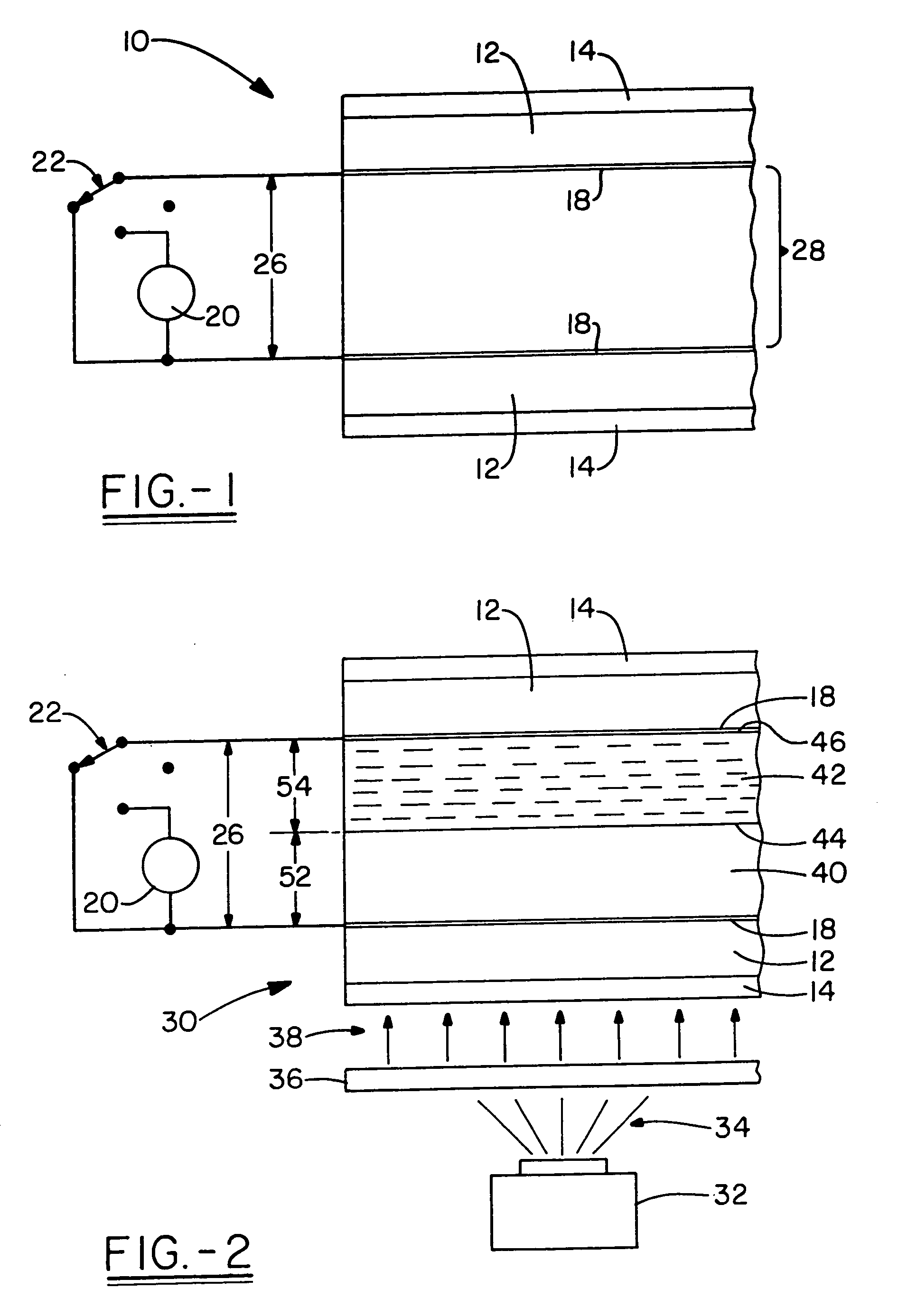Fabrication of aligned crystal cell/film by simultaneous alignment and phase separation
a technology of aligned crystal cells and films, applied in nuclear engineering, instruments, transportation and packaging, etc., can solve problems such as mechanical damage, adversely affect liquid crystal displays, and generate electrostatic charges
- Summary
- Abstract
- Description
- Claims
- Application Information
AI Technical Summary
Benefits of technology
Problems solved by technology
Method used
Image
Examples
Embodiment Construction
[0033]Referring now to FIG. 1, it can be seen that a precursor to the light modulating device, made according to the present invention, is designated generally by the numeral 10. As will become apparent, the light modulating cell precursor 10 does not include—although one may be provided—a separate, distinct alignment layer. The light modulating device of the present invention may be manufactured by a method which does not require a separate spin-coating step to deposit alignment layer precursor material onto the substrate. The method also does not require soft baking and / or hard baking the alignment layer. Further, the method does not require rubbing or otherwise physically contacting the alignment layer to impart properties that will later affect the liquid crystal material.
[0034]The light modulating device precursor, shown in FIG. 1, includes a pair of opposed, optically clear substrates 12 which may be glass, plastic or other material commonly known in the art. Advantageously, t...
PUM
| Property | Measurement | Unit |
|---|---|---|
| Phase separation | aaaaa | aaaaa |
| Microstructure | aaaaa | aaaaa |
| Sensitivity | aaaaa | aaaaa |
Abstract
Description
Claims
Application Information
 Login to View More
Login to View More - R&D
- Intellectual Property
- Life Sciences
- Materials
- Tech Scout
- Unparalleled Data Quality
- Higher Quality Content
- 60% Fewer Hallucinations
Browse by: Latest US Patents, China's latest patents, Technical Efficacy Thesaurus, Application Domain, Technology Topic, Popular Technical Reports.
© 2025 PatSnap. All rights reserved.Legal|Privacy policy|Modern Slavery Act Transparency Statement|Sitemap|About US| Contact US: help@patsnap.com



